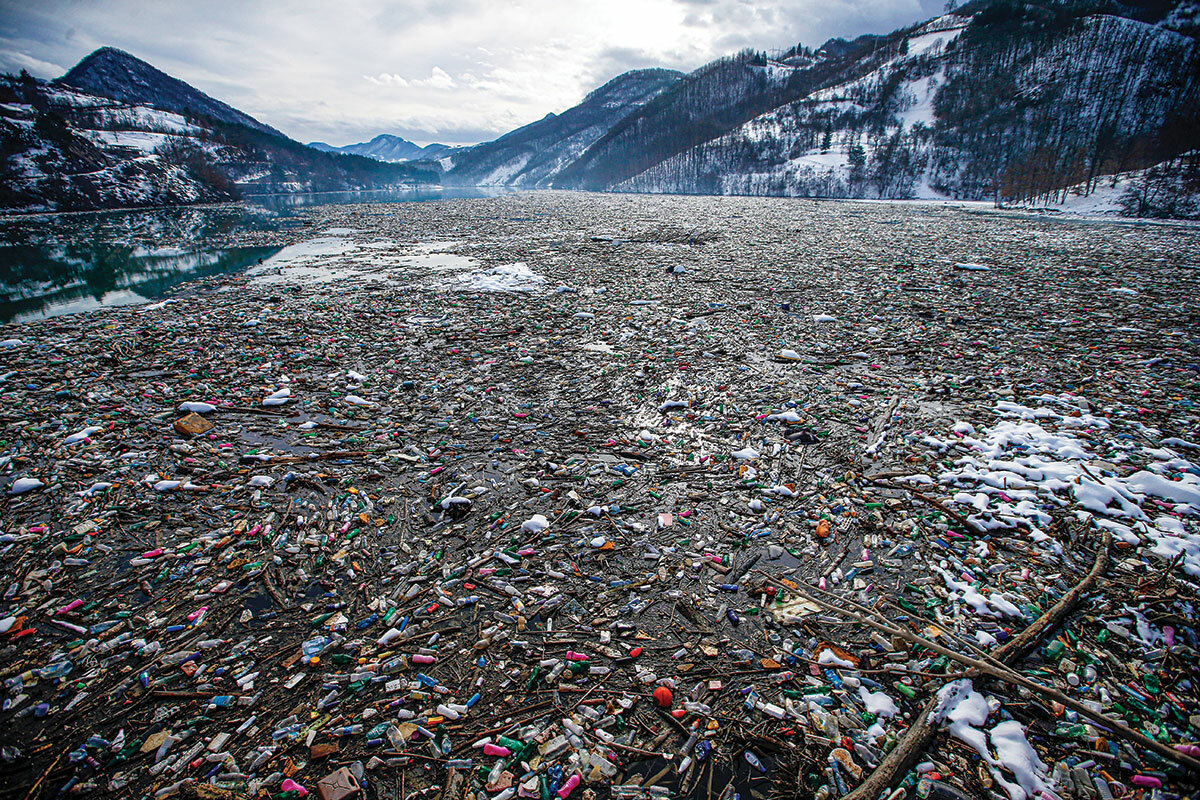The regulated future of plastic, and one small plan for coal
Loading...
In addition to our environment and climate change news briefs from the United Nations, India, Kenya, and Australia, here’s a sports victory that was years in the making.
1. United States
The U.S. women’s soccer team won equal pay with the men’s team. The settlement with the U.S. Soccer Federation includes $22 million in back pay for female players, who have been more successful than the men’s team for years and during some periods brought in more revenue. The decision mandates equal pay for the World Cup as well, where bonuses have differed dramatically between men and women.
Why We Wrote This
The plastic treaty being written at the United Nations may have profound effects on commerce. But this and other solutions for the environment in our progress roundup also take into account the well-being of business.
The agreement ended a six-year legal battle that at times seemed unlikely to succeed. U.S. Soccer prompted public outcry after arguing in proceedings that male players were more skilled and worked more demanding jobs than the women – a legal strategy it later abandoned. In 2020, a district judge ruled against the women’s team, stating the women had agreed to a different pay structure than the men. Advocates say this win sets a precedent for equal pay in sports and beyond. “There is no justice unless this never happens again,” said player Megan Rapinoe, a co-captain of the national team from 2018 to 2020. “This is the first step, not the last step.”
The Washington Post, ESPN
2. Kenya
Solar panels offer farmers in Kenya a way to reap the sun’s benefits twice by generating energy and protecting crops. High temperatures and light intensity can pose problems for agriculture in regions with limited rainfall, but agrivoltaics help solve those challenges by planting crops under the shade of solar panels. In initial tests at the Latia Agribusiness center in Isinya outside Nairobi, crops like cabbage, eggplant, and lettuce grew stronger and healthier beneath the panels than crops in control plots.
In East Africa’s first trials of agrivoltaics, solar panels were placed 10 feet above the ground, which leaves space for farmers to work comfortably below. The panels can be positioned higher if agricultural machinery is needed. Researchers say the strategy is a creative way to tackle food and water insecurity and provide clean electricity to households, while also stepping up climate resilience. Continued studies by Kenyan, Ugandan, and other researchers, led by the University of Sheffield, will explore the expansion of agrivoltaics in the region.
The Guardian, University of Sheffield
3. India
Women are staving off the dangers of extreme temperatures in their homes and increasing their earning power thanks to “cool roofs.” Temperatures in India often soar above 100 degrees Fahrenheit, making it difficult, if not impossible, to work comfortably. That’s especially true for women working at home in informal housing settlements, where low-cost, uninsulated roofs magnify heat. One study found that the productivity of female home-based workers in India fell 50% during the summer months, when heat poses serious health risks. Roof designs using bamboo, recycled materials, or reflective white paint ease heat stress and allow women to work during the hottest hours of the day.
While experts say a long-term solution requires upgrading housing structures entirely, cool roofs offer a more immediate remedy. The Mahila Housing SEWA Trust (MHST) has trained and helped over 27,000 households in seven Indian cities adopt climate-resilient solutions. “My quality of life is better,” said Dilshadbanu Shaikh, a kite-maker and mother of four from Ahmedabad, who borrowed 120,000 rupees ($1,584) to pay for a new roof, which keeps her home up to 9 degrees cooler. “That investment has already earned itself back,” said Ms. Shaikh.
“Women living in informal settlements are often overlooked,” said Prainta Sinha from MHST. “We want to change that and prioritize them.”
Reasons to be Cheerful
4. Australia
The world’s largest coal port is set to decarbonize by 2040. The Port of Newcastle in Australia exports around 165 million metric tons of coal each year. Under a two-part plan, the port will limit its income from coal to 50% by 2030 before the full switch to renewable energy for its own operations. To achieve this goal, the port is partnering with clean energy company Iberdrola, which operates a wind farm in New South Wales, to provide the port with wind power.
The announcement comes following the lowest levels yet of coal power generation as a portion of Australia’s electricity market in the final months of 2021, thanks to the growth of affordable renewables. “I would prefer to be doing this now while we have control over our destiny, while we have revenue coming in, than in a crisis situation where our revenue has collapsed and no one will lend us money,” said Chief Executive Officer Craig Carmody, who pointed to financial markets as a driving factor behind the decision.
Meanwhile, Australia’s largest coal-fired power plant will close in 2025, seven years earlier than scheduled. The Eraring power station, located north of Sydney, will be replaced by a large-scale battery.
The Guardian, BBC
World
The United Nations agreed on a resolution to begin solving the world’s growing plastic problem. Over 350 million tons of plastic waste are produced each year, prompting global concern that has mounted for decades over issues from ocean pollution to microplastics. The historic agreement, supported by over 150 nations, calls for an international negotiating committee to create a legally binding framework by the end of 2024 that will guide the world toward “the long-term elimination of plastic pollution.” This committee will be responsible for setting standards for plastic’s life cycle, from design and production to waste management, and clarifying reporting guidelines and financing mechanisms.
Many countries have already begun curbing plastic use. Rwanda, for one, banned plastic bags over a decade ago, and in 2020, the U.S. Congress passed the bipartisan Save Our Seas 2.0 Act to fight marine debris. But as recently as five years ago, “envisioning a treaty was unthinkable,” said David Azoulay, a lawyer at the Center for International Environmental Law. While some advocates wanted stronger language calling out the dangers of plastic to be included, the majority celebrated the resolution.
As Erin Simon from the World Wildlife Fund put it, “The proof is in the action we take from here on out.”
The Washington Post









